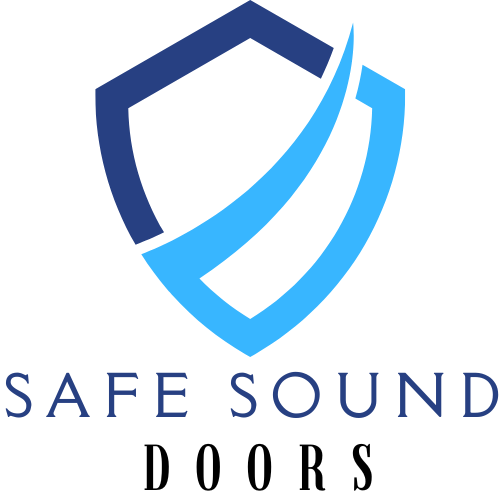Share
Jargon-Free Guide: Understanding Acoustic Ratings for Beginners
Estimated Reading Time: 6 minutes

If you’ve ever looked at a soundproof door product and felt lost in all the technical terms — you’re not alone. STC, dB, sound transmission loss... it can get overwhelming fast. But don't worry — in this guide, we’ll explain the basics in plain English, so you can make confident choices for your project.
What Is STC, and Why Does It Matter?
STC stands for Sound Transmission Class. It’s a number that tells you how well a door blocks sound. The higher the STC rating, the better the door is at keeping noise from passing through.
Here’s a quick reference:
- 🔈 STC 25–30: Low performance — you’ll still hear conversations clearly.
- 🔉 STC 35–40: Medium — voices become muffled, but loud sounds may pass.
- 🔇 STC 45–50+: High — most sounds are blocked; ideal for entertainment, hotel, or studio use.
At SafeSoundDoors, our doors range from Standard-Level (STC 35) to Professional-Level (up to STC 50), depending on your needs and space type.
So… What Exactly Is a Decibel?
Good question. A decibel (dB) is a unit for measuring sound intensity. Every 10 dB increase is roughly twice as loud to the human ear.
Example:
- 🗣 Normal conversation = around 60 dB
- 🎶 Loud music = 80–90 dB
- 🔨 Construction noise = 100+ dB
So if your venue is next to a street or busy hallway, a door with high STC rating (and good seals) can make that outside noise nearly disappear.
What Affects Acoustic Ratings?
Several factors play a role in how well a door performs acoustically:
- 🔧 Core material (rock wool, MLV, acoustic foam, etc.)
- 📐 Door thickness and density
- 🧩 Sealing system (rubber seals, drop seals, frame fit)
- 🚪 Installation quality — even the best door can fail if poorly fitted
Fireproof Doesn’t Always Mean Soundproof
This is where some people get confused. Just because a door is fire-rated doesn’t mean it will block sound well. Acoustic design requires different materials and layering. The best solution? A door that’s built for both — and we specialize in that.
What Should You Choose for Your Space?
Here’s a quick cheat sheet:
- 🎤 Studios / Karaoke Rooms: Go for STC 45+
- 🛌 Hotel Rooms / Apartments: STC 40–45
- 🛋 Private Lounges / Meeting Rooms: STC 35–40
- 🚻 Restrooms / Backrooms: Basic STC 30–35 is often enough
Still Unsure? We’ll Help You Decide
You don’t need to memorize the numbers. Our job is to recommend the right door level based on your real-life usage — not just specs on a chart.
Whether you’re running a high-end karaoke bar or just want your guests to sleep peacefully in a hotel suite, we’ll help you find the balance between noise control, design, and cost.
🛠 Got questions about STC or acoustic options? Chat with us on WhatsApp — no jargon, just answers.
